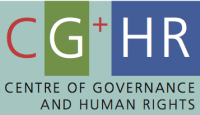 With communication a central element in humanitarian crises and humanitarian response, the next decade will see communicators change their approach in light of the increased significance of digital communications in such situations.
With communication a central element in humanitarian crises and humanitarian response, the next decade will see communicators change their approach in light of the increased significance of digital communications in such situations.
Digital trends include real-time mapping and analysis using social media, crowd sourcing and data mining, the use of mobile phones to disseminate information, online campaigns bringing publics and affected populations closer together, digital platforms for cash transfers and new digital tools for assessment work, as well as monitoring and evaluation. These changes have brought new actors not traditionally associated with humanitarian situations onto the scene: technologists, data analysts, social innovators, private sector businesses and financial intermediaries, among others.Yet to understand the full significance of these trends, we must dig deeper. There is a fundamental change underway in the underlying drivers of humanitarian crisis and of humanitarian response that will become a reality in 2025 if we consider that an essential condition that defines a ‘humanitarian situation’ is a communications crisis. This holds on two critical levels.
At the operational level, information communication failures mean that information on urgent and fast-changing needs is not easily transmitted, including from affected populations to existing providers of public goods. Further, physical communications breakdowns—that is, transportation infrastructure—make the timely distribution of needed public goods very difficult. A communications crisis, then, lies at the heart of a humanitarian crisis, where a disconnect emerges between the urgent needs of an affected human population and the capacity or will to meet these ends,On the socio-political level, this communications crisis partly defines humanitarian identities. Humanitarian discourses are concerned with affected populations, beneficiaries and recipients on one side and providers, aid-givers, donors and charities on the other. Yet this marks a clear deviation from the language of everyday commerce or politics. Any major structural change to the communications landscape does not merely change the operational aspects of humanitarian response, but also has the potential to reshape discourses on humanitarian identities and ultimately the nature and scope of what constitutes a ‘humanitarian situation’.
The digital communications revolution that has transformed connectivity and the information flows brought about through mobile phones and the Internet constitutes such a structural change. This shift in communications does not merely alter the dynamics of humanitarian response: it changes the scope of what can be considered a humanitarian situation.The communications revolution has, in a direct sense for humanitarian agencies, implications for both humanitarian operations and power relations.
Operationally, the ‘2025 Communicator’ will have new opportunities to address humanitarian operations needs enabled by better information flows. They will have to carry out real-time data gathering and analytics in collaboration with experts. As such, two-way information flows will be at the heart of effective response.At the same time the ‘2025 communicator’ will face a shift in power relations in the direction of affected populations as a result of better connectivity. ‘Beneficiaries’ and ‘recipients’ will have greater agency, greater voice and greater choice. They will be more informed and will demand to be more informed. ‘Aid shopping’ will be morally acceptable—it must be—and accountability will be more visible and more public, not simply a hidden donor-agency-beneficiary conversation. Think of ‘Trip Advisor’ and the potential shifts become simpler to understand.
Yet as noted, what enables this—the greater connectivity through new communications infrastructure (mostly corporately owned), which produces a range of information flows and data—has much wider implications. What counts as a ‘humanitarian crisis’ will be altered in key ways. Information flows will allow a range of other actors operating in the ‘normal’ economy and society to engage and different relations to be created.Shifts in information flows will produce data enabling markets and modeling, where risk and return may be calculable, products and delivery can be priced and transactions can be processed. ‘Big data’ can be analysed and scenarios predicted, risk can be insured, portfolios can be managed, securities and bonds can be traded. Non-humanitarian actors may take advantage of this ability to reach and access affected populations in less politically complex crises and are likely to marketise these situations. Further, risk management and insurance will feature more prominently in preparedness, planning and financing of disaster response.
Increased connectivity will enable new socioeconomic power relations writ large. On the one hand, consumers can stay consumers or even be created, while on the other, citizens with rights can more easily stay citizens with rights where connectivity is resilient. As a result, the language of ‘affected populations’ and ‘beneficiaries’ will be less tenable, while humanitarianism will be more subject to economic logics—such as consumer satisfaction and ‘value for money’—and political logics—such as rights, responsive demand-led governance, transparency and accountability. The ‘humanitarian’ situation will shrink in scope and be changed in nature.
Yet a distinctly humanitarian domain will likely remain. This discussion has largely concerned, on the one hand, risk-return, return on investment and profit margins, and on the other, citizenship, voice, rights and accountable governance. This implies certain levels of ‘normality’. This does not encompass all humans in need, wherever they are located and however uneconomic or sociopolitically excluded, nor does it consider the subtlety of understanding human vulnerabilities in context, with sociocultural drivers (beyond markets and data); nor does it attend especially to those who remain disconnected in communications terms, which raises new questions of who is more remote and more vulnerable (including acknowledging sociocultural barriers to speaking up).As such, humanitarian agencies will need to change to keep up with new communications realities, but some domains will remain distinctly familiar: complex humanitarian emergencies; politically challenging environments; forgotten, difficult and smaller crises; and most vulnerable groups in major disasters.
Ultimately, then the human, unqualified, accepted as they are wherever and whenever their basic humanitarian needs are unmet, will remain a central imperative in humanitarian action in 2025. The ‘2025 Communicator’ must remain cognisant of this while responding to and taking advantage of shifts in humanitarian response.





No Comment